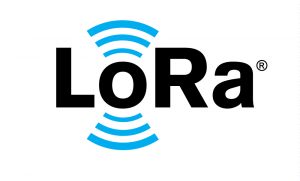
5G vs LoRa: Inside the city of Calgary
By Alistair Fulton, vice-president and general manager, wireless & sensing product group at Semtech
Automation / Robotics Electronics IoT applications applications IoT IoT LoRa LoRa LoRaWAN LoRaWAN protocol protocol smart city Smart CityThe United Nations estimates that 68% of the world’s population will live in an urban setting by 2050. As more residents move to city locations, government officials continue to adopt new smart solutions to better manage services improve quality of life and reduce operating expenses in a sustainable way. Smart city solutions can be leveraged in a number of ways to improve parking, the flow of traffic, street lighting, maintenance, waste management and pollution. 
LoRa Technology and low power wide area networks (LPWAN) based on the LoRaWAN protocol have emerged as a top option for cities as they look to deploy a smart infrastructure. This technology provides a smart sensing and control infrastructure to collect and analyze data from thousands of connected devices in a streamlined manner, in order to make intelligent decisions about the services they need to offer.
Why LoRa?
There’s lots of discussions about 5G, but it’s still hard to predict when this disruptive technology will become a reality. LoRa Technology is available today all around the globe with more than 600 known use cases and 87-million devices deployed.
LoRa Technology enables data communication over a long range while using very little power. When connected to a non-cellular LoRaWAN network, LoRa accommodates a vast range of IoT applications by transmitting packets with important information. LoRaWAN fills the technology gap of cellular and Wi-Fi/BLE based networks that require either high bandwidth or high power, or have a limited range or inability to penetrate deep indoor environments. In effect, LoRa Technology is flexible for rural or indoor use cases across smart cities, homes and buildings.

Alistair Fulton, vice-president and general manager, wireless & sensing product group at Semtech
LoRaWAN operates in unlicensed radio spectrum, which means that any city can use the radio frequencies without having to pay copius amounts of fees for transmission rights. LoRa Technology is also highly secure and offers an efficient, flexible and economical connectivity solution ideal for IoT applications whether indoor or outdoor and installed in public, private or hybrid networks. Simple sensor data can fuel analytics platforms, such as those for artificial intelligence and machine learning. These require data diversity which is made possible by low-cost LoRa-enabled sensors.
Enhancing the quality of life
In 2016, the City of Calgary became one of the most innovative cities in Canada. For 20 years, Calgary worked to build a strong infrastructure with internal city business units, civic partners, educational institutions and the broader industry. Calgary was the first city in North America to deploy LoRaWAN-based networks. Its smart city approach helped the city become more sustainable by bringing openness to data sharing and technology, as well as building trust and transparency with municipal government and citizens.
The City of Calgary worked with government officials to source funding in order to bring its vision of a City Network of Things Platform (CNoT) to life. Through extensive research Calgary proved its commitment to innovation and to providing business units, industry partners and citizens a secure and resilient IoT infrastructure. LoRaWAN is able to provide security functionality, ease of implementation and comprehensive network coverage to Calgary’s one million residents.
With help from various technology vendors such as Semtech, the City of Calgary was able to deploy more than 300 miles of dark fiber for a high speed reliable data network with 10 radio towers and Wi-Fi access points installed at traffic intersections. Continued efforts to secure additional funding for the City’s underlying fiber backbone and new IoT network laid the groundwork for increased connectivity to provide coverage and data transfer capabilities for public safety organizations, water and waste management and transit organizations. These actions allowed Calgary to avoid monthly service expenses incurred from third party mobile carrier tower leases and optimized asset tracking for its 3,300+ vehicles around the city.
LoRa in real life?
The range of smart city applications for Calgary is vast. Some examples are:
* The Urban Alliance is able to measure noise levels to address issues and improve the quality of life for residents. With help from the University of Calgary, the Urban Alliance is able to use LoRa-based sensors to characterize noise and create a use case on Calgary’s LoRaWAN based network.
* The Shanganappi Golf Course uses LoRa technology to track the pace of play, improving operational efficiencies to ensure the overall experience is enjoyable for customers. Location sensors embedded within the golf carts share real-time information to course marshals to avoid anomalies in pace of play. Once detected, these oddities can be swiftly addressed making for a seamless golfing experience.
* Calgary’s Devonian Gardens uses LoRa-based devices to measure soil conditions for urban canopy maintenance and water valve status remotely, which saves time, conserves resources and provides more accurate and timely data. By utilizing LoRa-based devices to gain an understanding of fundamental characteristics such as air, water, light and humidity, Calgary can provide more efficient predictive care to these plants.
LoRaWAN and LoRa Technology has been a great catalyst for Calgary to foster innovation and accelerate IoT development in the city.
